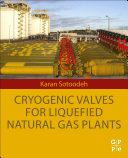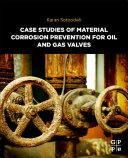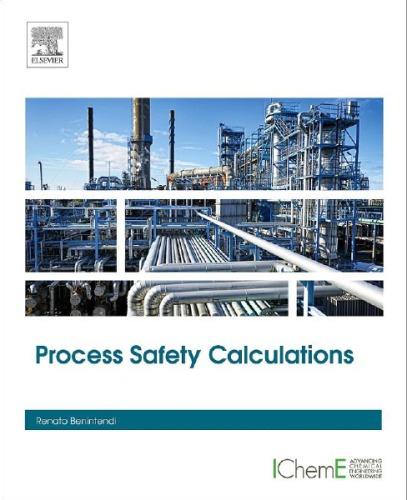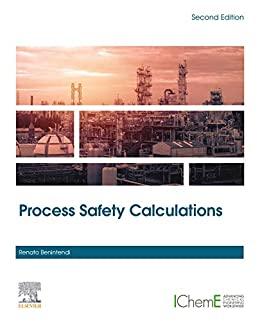IndustrialValves
IndustrialValves
CalculationsforDesign,Manufacturing, Operation,andSafetyDecisions
FirstEdition
KaranSotoodeh
UniversityofStavanger
Oslo,Norway
Copyright©2023byJohnWiley&Sons,Inc.Allrightsreserved.
PublishedbyJohnWiley&Sons,Inc.,Hoboken,NewJersey. PublishedsimultaneouslyinCanada.
Nopartofthispublicationmaybereproduced,storedinaretrievalsystem,ortransmittedinany formorbyanymeans,electronic,mechanical,photocopying,recording,scanning,orotherwise, exceptaspermittedunderSection107or108ofthe1976UnitedStatesCopyrightAct,without eitherthepriorwrittenpermissionofthePublisher,orauthorizationthroughpaymentofthe appropriateper-copyfeetotheCopyrightClearanceCenter,Inc.,222RosewoodDrive,Danvers, MA01923,(978)750-8400,fax(978)750-4470,oronthewebatwww.copyright.com.Requeststo thePublisherforpermissionshouldbeaddressedtothePermissionsDepartment,JohnWiley& Sons,Inc.,111RiverStreet,Hoboken,NJ07030,(201)748-6011,fax(201)748-6008,oronlineat http://www.wiley.com/go/permission.
Trademarks:WileyandtheWileylogoaretrademarksorregisteredtrademarksofJohn Wiley&Sons,Inc.and/oritsaffiliatesintheUnitedStatesandothercountriesandmaynotbe usedwithoutwrittenpermission.Allothertrademarksarethepropertyoftheirrespective owners.JohnWiley&Sons,Inc.isnotassociatedwithanyproductorvendormentionedinthisbook.
LimitofLiability/DisclaimerofWarranty
Whilethepublisherandauthorhaveusedtheirbesteffortsinpreparingthisbook,theymakeno representationsorwarrantieswithrespecttotheaccuracyorcompletenessofthecontentsofthis bookandspecificallydisclaimanyimpliedwarrantiesofmerchantabilityorfitnessforaparticular purpose.Nowarrantymaybecreatedorextendedbysalesrepresentativesorwrittensalesmaterials. Theadviceandstrategiescontainedhereinmaynotbesuitableforyoursituation.Youshouldconsult withaprofessionalwhereappropriate.Further,readersshouldbeawarethatwebsiteslistedin thisworkmayhavechangedordisappearedbetweenwhenthisworkwaswrittenandwhenitis read.Neitherthepublishernorauthorsshallbeliableforanylossofprofitoranyothercommercial damages,includingbutnotlimitedtospecial,incidental,consequential,orotherdamages.
Forgeneralinformationonourotherproductsandservicesorfortechnicalsupport,please contactourCustomerCareDepartmentwithintheUnitedStatesat(800)762-2974,outsidethe UnitedStatesat(317)572-3993orfax(317)572-4002.
Wileyalsopublishesitsbooksinavarietyofelectronicformats.Somecontentthatappearsinprint maynotbeavailableinelectronicformats.FormoreinformationaboutWileyproducts,visitour websiteatwww.wiley.com.
LibraryofCongressCataloging-in-PublicationData
Names:Sotoodeh,Karan,author.
Title:Industrialvalves:calculationsfordesign,manufacturing, operation,andsafetydecisions/KaranSotoodeh.
Description:Firstedition.|Hoboken,NewJersey:Wiley,[2023]| Includesbibliographicalreferencesandindex.
Identifiers:LCCN2023002088(print)|LCCN2023002089(ebook)|ISBN 9781394185023(cloth)|ISBN9781394185030(adobepdf)|ISBN 9781394185054(epub)
Subjects:LCSH:Valves–Designandconstruction–Mathematics.|Fluid dynamics–Mathematics.|Engineeringmathematics–Formulae.
Classification:LCCTS277.S682023(print)|LCCTS277(ebook)|DDC 621.8/40151–dc23/eng/20230302
LCrecordavailableathttps://lccn.loc.gov/2023002088
LCebookrecordavailableathttps://lccn.loc.gov/2023002089
CoverImage(s):Rawf8/AdobeStockPhotos;WhoisDanny/AdobeStockPhotos CoverDesign:Wiley
Setin9.5/12.5ptSTIXTwoTextbyStraive,Pondicherry,India
Contents
1FlowCapacity 1
1.1Introduction 1
1.2FlowCoefficientChartandFlowCurve 8
1.3RangeabilityandTurndown 12
1.4ValveAuthority 14
1.5ValveGain 15 QuestionsandAnswers 16 FurtherReading 20
2ValveSizing 22
2.1Introduction 22
2.2IsolationValveSizing 22
2.3Nonreturn(Check)ValveSizing 26
2.4ControlValveSizing 34
2.4.1ControlValveSizingforLiquids 34
2.4.1.1SpecifytheVariablesRequiredtoSizetheValve 35
2.4.1.2DeterminetheEquationConstant(N) 37
2.4.1.3DeterminePipingGeometryFactor(FP) 37
2.4.1.4DeterminetheMaximumFlowRate(qmax)andMaximumPressure Drop(ΔPmax) 39
2.4.1.5SolveforFlowCoefficient 44
2.4.1.6SelecttheCorrectValveSize 44
2.4.2ControlValveSizingforGasandSteam 47
2.4.2.1SpecifytheVariablesRequiredtoSizetheValve 47
2.4.2.2DeterminetheEquationConstant(N) 48
2.4.2.3DeterminePipingGeometryFactor(FP) 48
2.4.2.4DeterminetheExpansionFactor(Y) 48
2.4.2.5SolvefortheRequiredFlowCoefficient(Cv) 50
2.5SafetyReliefValveSizing 56
2.5.1SizingforGasorVaporRelief 59
2.5.1.1CriticalFlow 59
2.5.1.2SubcriticalFlow 73
2.5.2SizingforSteamRelief 75
2.5.3SizingforLiquidRelief 79
2.5.3.1SizingforLiquidReliefwithCapacityCertification 79
2.5.3.2SizingforLiquidReliefWithoutCapacityCertification 84
2.5.4SizingforTwo-PhaseLiquid/VaporRelief 85
2.5.4.1SizingforSaturatedLiquidandSaturatedVapor,LiquidFlashes 88
2.5.4.2SizingforSubcooledatthePressureReliefValveInlet 91
2.5.5SizingforFireCaseandHydraulicExpansion 93
2.5.5.1HydraulicExpansion(ThermalExpansion) 95
2.5.5.2SizingSafetyValvefortheFireCase 96
QuestionsandAnswers 103 FurtherReading 110
3CavitationandFlashing 112
3.1Introduction 112
3.2Cavitation 112
3.2.1WhatisCavitation? 112
3.2.2CavitationEssentialParameters 113
3.2.3CavitationAnalysis 115
3.3Flashing 116
QuestionsandAnswers 118 FurtherReading 123
4WallThickness 125
4.1Introduction 125
4.2ASMEB16.34MinimumWallThicknessCalculation 125
4.2.1ConservationApproach(MandatoryAppendixA) 125
4.2.2NonconservationMethod 129
4.2.3ASMESec.VIIIDiv.02WallThicknessCalculation 134
4.3WaferDesignThicknessValidation 136
QuestionsandAnswers 142 FurtherReading 147
5MaterialandCorrosion 149
5.1Introduction 149
5.2CarbonDioxideCorrosion 150
5.2.1CorrosionMechanism 150
5.2.2CorrosionMitigation 151
5.2.3CorrosionRateCalculation 152
5.2.3.1BasicCO2 CorrosionRate 152
5.2.3.2CorrectiveCO2 CorrosionRate 154
5.2.3.3FinalCO2 CorrosionRate 161
5.3PittingCorrosion 162
5.4CarbonEquivalent 165
5.5Hydrogen-InducedStressCracking(HISC)Corrosion 167
5.5.1HISCandVulnerableMaterials 168
5.5.2HISCandStress 168
5.5.3HISCandCathodicProtection 168
5.5.4HISCandDNVStandard 169
QuestionsandAnswers 177
FurtherReading 184
6Noise 185
6.1IntroductiontoSound 185
6.2IntroductiontoNoise 186
6.3NoiseinIndustrialValves 189
6.3.1MechanicalNoiseandVibration 190
6.3.2FluidNoise 190
6.3.2.1AerodynamicNoise 191
6.3.2.2HydrodynamicNoise 191
6.3.3NoiseControlStrategies 191
6.4NoiseCalculationsforPipesandValves 192
6.4.1AcousticFatigueAnalysis 192
6.4.1.1SoundPowerLevelCalculations 193
6.4.1.2MachNumber 198
6.4.2NoiseinControlValves 203
6.4.2.1AerodynamicNoiseinControlValves 203
6.4.2.2HydrodynamicNoiseinControlValves 208
6.4.3NoiseinPressureSafetyorReliefValves 215
6.4.3.1CalculationofNoiseEmissionAccordingtoISO4126-9 216
6.4.3.2CalculationofNoiseEmissionAccordingtoAPI521 218
6.4.3.3CalculationofNoiseEmissionAccordingtoVDI2713 221 QuestionsandAnswers 222
FurtherReading 231
7WaterHammering 233
7.1Introduction 233
7.2WaterHammeringandPressureLossinCheckValves 233
7.3WaterHammeringCalculations 243 QuestionsandAnswers 249
FurtherReading 256
8SafetyValves 258
8.1Introduction 258
8.2SafetyValveParts 259
8.3SafetyValveDesignandOperation 259
8.3.1DesignandOperationParameters 259
8.3.1.1OverpressureCriteria 277
8.3.2PrincipleofOperation 278
8.3.3SafetyValveReactionForces 282
8.3.4SafetyValveCapacityConversion 294
QuestionsandAnswers 296 FurtherReading 302
9SafetyandReliability 304
9.1Introduction 304
9.2SafetyStandards 305
9.3RiskAnalysis 308
9.4BasicSafetyandReliabilityConcepts 312
9.4.1SystemIncidentsandFailures 312
9.4.1.1FailureRate 313
9.4.1.2RepairRate 317
9.4.1.3MeanTimetoFailure(MTTF) 317
9.4.1.4MeanTimeBetweenFailure(MTBF) 318
9.4.1.5MeanTimetoRepairandRecovery(MTTR) 319
9.4.1.6MeanTimetoDetection(MTTD) 319
9.4.2ReliabilityandUnreliability 319
9.4.3AvailabilityandUnavailability 331
9.5SafetyIntegrityLevel(SIL)Calculations 336
9.5.1SIL 336
9.5.2ProbabilityofFailureonDemand(PFD) 338
9.5.3MeanDowntime 339
9.5.4DiagnosticCoverage 342
9.5.5SafeFailureFraction(SFF) 342
9.6ConditionMonitoring(ValveWatch) 347 QuestionsandAnswers 348 FurtherReading 354
10ValveOperation 357
10.1Introduction 357
10.2ValveTorque 358
10.3StemDesign 363
10.3.1MASTCalculations 363
10.3.2BucklingPrevention 369
10.3.3TorsionalDeflectionPrevention 374
10.3.4MASTLimitationforQuarter-TurnCryogenicValves 376 QuestionsandAnswers 378 FurtherReading 384
11Miscellaneous 385
11.1Introduction 385
11.2JointEfficiency 386
11.2.1WeldJointEfficiency 386
11.2.2BoltedJointEfficiency 388
11.2.2.1BoltedBonnetorCoverJoints 388
11.2.2.2BoltedBodyJoints 392
11.2.3ThreadedJointEfficiency 394
11.2.3.1ThreadedBonnetorCoverJoints 394
11.2.3.2ThreadedBodyJoints 395
11.3StemSealing 395 QuestionsandAnswers 399 FurtherReading 405
Index 407
FlowCapacity
1.1Introduction
Valveflowcapacity,alsocalledflowcoefficientorcapacityindex,isdefinedasthe valve’scapacityforaliquidorgastoflowthroughit.TheflowcoefficientistechnicallydefinedastheflowrateofwaterinUSgallonsperminuteatthetemperatureof60 Fwithapressuredropof1psiacrossthevalve.Flowcoefficient,as shownwithparameter Cv,increasesbyopeningthevalvetothemaximumvalue whenthevalveis100%open.Pressuredrop,alsocalleddifferentialpressure,is definedasthedifferencebetweentheinletandoutletofthevalve;foravalvewith aspecificsize,thegreaterthedifferentialpressure,thegreatertheflowrate.These twoparameters,flowrateanddifferentialpressure,arebroughttogetherbyaflow coefficient,whichallowstheperformancesofdifferentvalvesregardingflowrates tobecompared.Thedifferentialpressureacrossthevalvesiscalculatedbyknowingtheflowrates,andfinally,theflowratesaredeterminedforgivendifferential pressurevalues.Furthermore,theflowcoefficientisanessentialparameterfor sizingvalves.Theflowcoefficient(Cv)forliquidsiscalculatedfromEq.(1.1).
FlowCoefficient(Cv)CalculationforLiquids
where:
Cv:Flowcoefficient(USgalperminute[gpm]/psi); Q:Flowrate(USgpm);
SG:Fluid-specificgravity(dimensionless)calculatedbyEq.(1.2); ΔP:Differentialpressureacrossthevalve(poundpersquareinch[psi]).
Note:Water-specificgravityisequaltoone.
IndustrialValves:CalculationsforDesign,Manufacturing,Operation,andSafetyDecisions, FirstEdition.KaranSotoodeh.
©2023JohnWiley&Sons,Inc.Published2023byJohnWiley&Sons,Inc.
SpecificGravity(SG)Calculation
where:
ρfluid:Densityofthefluidpassingthroughthevalve;
ρwater:Waterdensityequalto1g/cm3 or1000kg/m3
Tosummarize,theflowcoefficientcalculatedbyEq.(1.1)isaparameter obtainedbyexperimentsthatindicatetheflowcapacityofincompressiblefluid (liquid)duringnonchokedandnonflashingflowconditionswithaunitofdifferentialpressureacrossthevalve.Chokedflowisfluidwithalimitedmassflowrate duetorestrictionslikenozzles,orifices,andreducers.Flashingflowreferstothe significantevaporationofliquidduetoadramaticpressuredrop.
Example1.1 Calculatetheflowcoefficientofacontrolvalvethatpasses20US gpmofwaterwitha4psipressuredropinafullyopenposition.
Answer
Twoflowcoefficientsarecommonlyusedintheoryandpractice:oneAmerican flowcoefficient(Cv)andtheothermetric(Kv)alsocalledtheflowfactor.Themetricversionoftheflowcoefficientorflowfactoroffersthemeasurementintermsof cubicmetersperhour(m3/h)offlowinatemperaturerangeof5–30 Cforadifferentialpressureof1bar.Theflowfactor(Kv)forliquidsiscalculatedbyEq.(1.3).
FlowFactor(Kv)CalculationforLiquids
where:
Kv:Flowcoefficient(m3/h bar);
Q:Flowrate(m3/h);
SG:Fluid-specificgravity(dimensionless)calculatedthroughtheuseofEq.(1.2);
ΔP:Differentialpressureacrossthevalve(bar).
1.1Introduction 3
Theflowcoefficient(Cv)forairandgasesiscalculatedbasedoneitherEq.(1.4) orEq.(1.5),dependingonthecriticalityofthepressuredrop.Acriticalpressure dropindicatesanoutletpressure(PO)thatislessthanorequalto50%oftheinlet pressure(Pi).Anoncriticalorsubcriticalpressuredropiswheretheoutletpressure ishigherthan50%oftheinletpressure.
FlowCoefficientCalculationforAirandGases(CriticalPressureDrop)
where:
Cv:Flowcoefficient(Standardcubicfeetperminute[SCFM]/psi);
Q:Gasflowrate(Standardcubicfeetperminute[SCFM]);
SG:Specificgravityofflowinggasrelativetoairat14.7psiand60 F(Note1);
T:Flowingairorgastemperature( F);and Pi:Inletgasabsolutepressure(psia)(Note2).
Note1
ThespecificgravityofsomecommongasescanbefoundinTable1.1.SGofair isequaltoone.
Table1.1 Specificgravityofsomecommongases.
4 1FlowCapacity
Table1.1 (Continued)
GasSpecificgravity
Digestivegas(sewageorbiogas)0.8
Ethervapor2.586
Hexane2.973
Hydrogen0.0696
Hydrogenchloride – HCL1.268
Nonane4.428
Table1.1 (Continued)
Note2
Absolutepressuremeasurementconsiderszeroasthereferencepoint,anditis thetotalpressureofgaugeandatmosphericpressurevalues.Atmospheric pressurerepresentsthepressurewithintheearth’satmosphere.
FlowCoefficientCalculationforAirandGases(Noncritical PressureDrop)
where:
PO:Outletgasabsolutepressure(psia); ΔP:Differentialpressurebetweentheinletandoutlet(psia)equalto Pi PO; T:Fluidtemperature( F).
Example1.2 Airwithapressureof1000psiaisflowingthroughaglobevalve thatreducesthepressureto400psia.Consideringtheflowofairthroughthevalve is400SCFM,anditstemperatureis30 C,whatisthevalve’sflowcoefficientin SCFM/psi?
Answer
Figure1.1isaschematicofthevalve,inlet,andoutletairincludingvaluesof pressure,flowrate,andspecificgravity.
Figure1.1 Aglobevalveschematicincludinginletandoutletairservice,valuesof pressure,andflowrate.
Theserviceisair,andtheoutletpressureislessthanhalfoftheinletpressure indicatingacriticalpressuredrop,sotheflowcoefficientiscalculatedusing Eq.(1.4).Theairtemperatureis30 C,whichequalsto86 F.
Example1.3 Methane(CH4)withaflowrateof100SCFMandapressureof140 psiaispassingthroughacontrolvalve,whichreducesthepressureto110psia. Assumingthegastemperatureisequalto60 F,calculatetheflowcoefficient Cv.
Answer
Theoutletpressureis78.5%oftheinletpressure,soEq.(1.5)forgaseswithnoncriticalpressuredropshouldbeused.Thespecificgravityofmethaneis0.565,per Table1.1.
Theflowfactor(Kv)forairandgasesiscalculatedbasedoneitherEq.(1.6) orEq.(1.7),dependingonthecriticalityoftheflowandpressuredrop. Asupercriticalfloworpressuredropindicatesanoutletpressure(PO)thatisless thanorequalto50%oftheinletpressure(Pi).Anoncriticalpressuredropiswhere theoutletpressureishigherthan50%oftheinletpressure.
1.1Introduction
FlowFactorCalculationforAirandGases(CriticalPressureDrop)
where:
Kv:Flowfactor(m3/h bar);
Q:Gasflowrate(Standardcubicmeterperhour[m3/h]);
Pi:Inletgasabsolutepressure(bara);
ρ:Gasdensity(kg/m3);
Ti:Flowingairorgasinlettemperature( K).
FlowFactorCalculationforAirandGases(NoncriticalPressureDrop)
where:
PO:Outletgasabsolutepressure(bara);
ΔP:Pressurelossinvalve(bara).
Example1.4 Isobutanewithtemperatureandpressurevaluesof20 Cand 10bar,respectively,passesthroughacontrolvalvewherethepressureisreduced to2bar.Calculatetheflowfactorofthevalve,assumingtheflowrateofisobutane is2000m3/h.
Answer
P O P i = 2 10 =0.2<0.5 Itisacriticalpressuredrop,sotheflowfactoriscalculated accordingtoEq.(1.6).Thespecificgravityofisobutaneis2.01(refertoTable1.1). Consideringtheairdensityequalto1.225kg/m3,theisobutanedensityiscalculatedasfollows:
Theisobutanetemperatureisconvertedfrom Cto Kasfollows:
Conversionsbetweentheflowcoefficientandflowfactorarecalculatedfrom Eqs.(1.8)and(1.9).
RelationshipBetweenFlowCoefficientandFactor
Example1.5 Calculatetheflowcoefficient(Cv)forthecontrolvalvein Example1.4.
Answer
1.2FlowCoefficientChartandFlowCurve
Aflowcoefficientchartorflowcurveshowstherelationshipbetweentheopening percentageandtheamountorpercentageof Cv orflowrate.Figure1.2isaflow characteristicschartorcurveshowingtherelationshipbetweentheopeningratio ofvalvesandthepercentageofmaximumfloworflowcoefficient.Threeflow
1.2FlowCoefficientChartandFlowCurve 9
curvesorcharacteristicsareshowninthefigure:quickopening,linear,andequal percentage.Quickopeningmeansthatalargeamountofflowpassesthroughthe valveasitbeginstoopen.Asmallvalveopening,especiallyinthebeginning,can leadtoahighamountofflow.Linearflowmeansthatthechangeintheflowis equaltotheopeningpercentage.Forexample,40%ofopeningavalvepasses 40%ofthefluidthroughthevalve.Anequalpercentagemeansthatthevalve releasesarelativelylowamountoffluidatthebeginningoftheopeningstage. Forexample,avalvethatisgettingopenedby35%tojuststartreleasingtheflow hasanequalpercentageflowcharacteristic.Controlvalveshavetypicallyequal percentageandlinearflowcharacteristics,andthequickopeningflowcharacteristicismostcommonlyusedforon/offvalves.
Example1.6 Acontrolvalvewithalinearflowcharacteristichasaflowcoefficientof700atafullyopenposition.Calculatethe Cv valueofthevalveat5%and 95%openingpercentages.
Answer
Flowratesand Cv valuesareincreasedlinearlybyincreasingthevalveopening percentageforalinearflowcharacteristic.Thus,valuesofflowrateandflowcoefficientatanyvalveopeningpercentageforalinearflowcharacteristicarecalculatedaccordingtoEqs.(1.10)and(1.11),respectively.
ValveFlowRateCalculationBasedonValveOpeningPercentagefora
where:
qvp:Valveflowratelinkedtothevalveopeningpercentage; qmax:Maximumflowratepassingthroughthevalveatthefullyopenposition; vp:Valveopeningpercentage.
ValveFlowCoefficientCalculationBasedonValveOpeningPercentage foraLinearFlowCharacteristic
where:
Cvvp:Valveflowcoefficientlinkedtothevalveopeningpercentage; Cvmax:Maximumflowcoefficientofthevalveatthefullyopenposition.
C v95 =700×0 95=665
Therefore,theflowcoefficientsofthevalveat5%and95%openingpercentages are35and665,respectively.
Example1.7 Acontrolvalvewithanequalpercentageflowcharacteristichasa flowcoefficientof640atafullyopenposition.Calculatethe Cv valueofthevalveat 10%and90%openingpercentages,respectively.
Answer
Flowratesand Cv valuesarenotincreasedlinearlybyincreasingthevalveopening percentageforanequalpercentagecharacteristic.Thus,valuesofflowrateand flowcoefficientatanyvalveopeningpercentageforanequalpercentageflowcharacteristicarecalculatedaccordingtoEqs.(1.12)and(1.13),respectively.
ValveFlowRateCalculationBasedonValveOpeningPercentageforan
93
80
Therefore,theflowcoefficientsofthevalveat10%and90%openingpercentages are18.93and432.80,respectively.
Valvesaredividedintotwomajorcategoriesbasedontheclosuremember motion:linearandquarter-turn.Linearmotionvalvessetoffhaveaclosurememberthatmovesupanddownwithalinearmotiontochangetheflowratethrough
1.2FlowCoefficientChartandFlowCurve 11
thevalve.Quarter-turnlikeballandbutterflyvalvesinwhichaclosuremember andthestemrotate90 betweentheopenandclosedpositions.Thevalveflow coefficientchartorflowcharacteristicforaquarter-turnvalvecouldbeprovided asarelationshipbetweentheflowrateor Cv andtheangleofthestemorclosure member.Itshouldbenotedthattheangleofstemandclosurememberforquarterturnvalvesisequal.Forexample,Figure1.3illustratesacoupleofflowcoefficient chartsorcurvesfora38 CL1500(equivalentto250barnominalpressure)ball valve.Thecharthereshowstherelationshipbetweentheangleofstemandflow coefficient,whereasthelowerchartillustratestheconnectionbetweentheopening percentageandtheflowcoefficientofthevalve.Evenwhenthestemangleis33 , noflowispassingthroughthevalve,meaningthatthevalvehasanequalpercentageflowcharacteristic.Inlightofthefactthat90 rotationofthestemandclosure membercorrespondsto100%orfullvalveopening,usinginterpolation,a33 stem anglecorrespondsto36.6%opening.Thefullopen Cv ofthevalveistheonetypicallyprovidedbyvalvemanufacturersongeneralarrangement(GA)valvedrawings,whichis118,179gpminthiscase.GAvalvedrawingsdeliverthedimensions
Tables of estimated Cv values
Table1.2 Flowcoefficient(Cv)valuesingpm/psiforgate,globe,andcheckvalves inthesizerangeof1/4 –3 fromonemanufacturer.
1/4
3/8
1 2526345.654.431.4 11/4 32376015 11/2 4060922112.610.557.6 2 50922002917.414.580.1 3 80200 12 1FlowCapacity
ofmainvalveattributions,suchasface-to-faceorend-to-end,andvalveheight. Processengineersrequire Cv valuestoensurethatvalvesprovideexpectedflow capacities.Itisimportanttoknowthattheflowcoefficientdependsonmanyfactors suchasthesizeandtypeofvalves,typeofdesign(e.g.fullboreorreducedbore),and valvemanufacturer.Table1.2provides Cv valuesingpm/psiforgate,globe,and checkvalvesinthesizerangeof1/4 –3 fromonemanufacturer.Gateandglobe valvesareusedforstop/startandflowregulation,respectively.Checkvalvesare nonreturnvalvesthatareopenedbythefluidflowinonedirectionandprevent theflowfromreturningtotheupstreamsideofthevalve.NPSandDNin Table1.2representnominalpipesizeanddimensionordiameternominal,respectively.NPSandDNaretwowaystoexpressthesizeofthepipingandvalves.DNis expressedinmetricunitsofamillimeter.Forexample,DN25andDN50imply dimensions/diametersof25mmand50mm,respectively.DNisthemetricequivalentofNPS,andDNiscalculatedbymultiplyingthepipeorvalvesizeininches (NPS)by25.Forexample,a1 NPSpipeorvalvecorrespondstoDN25.
1.3RangeabilityandTurndown
Rangeabilityisanotherflowratedefinitionforindustrialvalvesusedforvalvesizing.Rangeabilityisrelevantforthevalvesusedforflowcontrolorthrottling,such ascontrol,globe,butterfly,plug,andV-notchballvalves.Avalvewithhigherflow
1.3RangeabilityandTurndown 13
rangeabilityenablescontroloftheflowoverthewiderflowrange.Acontrolvalve isanactuatedglobevalveusedtocontrolthefluidbyalteringthesizeofthefluid passage.Directflowratecontrolleadstochangesinmajorprocessquantitiessuch aspressure,temperature,andliquidlevel.Anactuatorisamechanicalorelectrical deviceinstalledontopofindustrialvalvestooperate(openandclose)thevalves automaticallywithoutanyneedforanoperator.Rangeabilityisdefinedastheratio ofmaximumflowtoaminimumcontrollableflowofavalveinstalledinapiping system,whichiscalculatedbyEq.(1.14).Thus,iftheminimumcontrollable flowis10%ofthemaximumcontrollableflow,therangeabilityofthevalveis 100/10=10.Itisimportanttonotethattheminimumcontrollableflowisnot theflowleakagethroughthevalvewhenitisclosed.
Valvesareoftennotrequiredtohandlethemaximumcontrollableflow;asan alternative,themaximumoperationflowpassesthroughthevalve.Thus,theterm turndownisequaltoorsmallerthanrangeabilityandiscalculatedaccordingto Eq.(1.15).Forexample,thevalveforwhichtherangeabilityiscalculatedmayneed tohaveamaximumnormaloperationflowequaltoonly70%ofthemaximum controllableflow,sotheturndownis70/10=7.
RangeabilityCalculation
R= Maximumcontrollableflow Minimumcontrollableflow
TurndownCalculation
1 14
T= Maximumnormaloperatingflow Minimumcontrollableflow 1 15
Example1.8 Themaximumandminimumcontrollableflowsbyacontrolvalve areat95%and5%oftheirfullopeningpositions,respectively.Calculatethevalve rangeabilityintwocasesofthelinearandequalpercentageflowcharacteristics.
Answer
R = Maximumcontrollableflow Minimumcontrollableflow = Flowat95 valveposition Flowat5 valveposition
R =Linearflowcharacteristic= 95 qmax 5 qmax = 95 5 =19
R =Equalpercentageflowcharacteristic= qmax × α0 95 1 qmax × α0 05 1 = 500 95 1 500 05 1 = 0 8223 0 0243 =33 84
Example1.9 Theflowcoefficientofavalveinthefullyopenpositionis640.The pressuredropofthefluidservice,whichiswater,is1psiwhenthevalveisfully open.Calculatethevalverangeability,assumingthatthevalve’smaximumand minimumcontrollableflowsareadjustedat90%and10%oftheirfullopeningpositions,respectively,andthevalveflowcharacteristicislinear.
Answer
R = Maximumcontrollableflow
Minimumcontrollableflow = Flowat90 valveposition Flowat10 valveposition = 576 64 =9
1.4ValveAuthority
Valveauthorityisanotheridentificationforselectingandsizingthevalvesusedfor flowcontrol,suchascontrolvalves.Itexpressestheratiobetweenthepressure dropacrossthevalveusedforflowcontrolandthetotalpressuredropacross thewholesystemasperEq.(1.16).
ValveAuthority
where:
N:Valveauthority(dimensionless);
ΔP1:Pressurelossinavalveinafullyopenposition(bara);
ΔP2:Pressuredropacrosstheremainderofthesystem(circuit);
ΔP1+ΔP2:Pressuredropacrossthewholesystem(circuit)
Theconventionaldefinitionofacontrolvalveauthority(N)measureshowmuch thesystem’spressuredropisrelatedtothecontrolvalve.Avalveauthorityvalue
1.5ValveGain 15
lowerthan0.25indicatesthatthevalveforfluidcontrolhasunstablefluidcontrol characteristics,soitisnotrecommended.Conversely,avalveauthorityvaluefrom 0.5to1providesgoodtoexcellentfluidcontrolbutwithahighpressuredrop.So,it resultsinhighenergyconsumption,whichisundesirable.Avalveauthority between0.25and0.5providesfairtogoodcontrolwithareasonablepressuredrop. Thebestengineeringpracticeforcontrolvalveselectionandsizingistokeepthe valueof N near0.5butnotgreaterthan,e.g.0.4.
Example1.10 Asystemhasatotalpressuredrop(ΔP1+ΔP2)of1.25bar.Ifthe controlvalveinthesystemhasavalveauthority(N)equalto0.45,whatisthepressuredropacrossthevalve?Assumingthatthevalvefluidiswaterwithaflowrate of15m3/h,whatisthevalveflowfactor?
Answer
1.5ValveGain
Valvegainistheratioofflowchangetothevalveclosuremembertravel(stroke)or valveopeningpercentage.ThisparameteriscalculatedfromEq.(1.17).Gain shouldneverbelessthan0.5toavoidanyproblemforthevalvetocontroltheflow. Thegainsameasthepressuredropisconstantinthelinearvalve,whereasit increasesasthevalveopensinequalpercentageflowcharacteristics.
ValveGain
Valvegain= Flowratechange
Valveopeningpercentagechange 1 17
Example1.11
Threeflowratesof35gpm,100gpm,and170gpmcorrespondto strokeoropeningpercentagesof42%,69%,and90%,respectively.Calculategain values,andcanthisvalveperformflowcontrol?
Table1.3 Valveflowratesandcorrespondingopeningpercentages.
Flow(gpm)Stroke(%)Changeinflow(gpm)Changeinstroke(%)
Answer
Allprovidedinformation,includingthevalveflowratesandcorresponding openingpercentages,issummarizedinTable1.3:
Valvegain#1= Flowratechange#1
Valveopeningpercentage#1 = 65 27 =2 41
Valvegain#2= Flowratechange#2
Valveopeningpercentage#2 = 70 21 =3 33
Thedifferencebetweenthetwogainsshouldbelessthan50%ofthehigher gainvalue.
3 33 – 2 41=0 92,50 ×3 33=1 65
Since0.92islessthan1.65,thereshouldbenoproblemusingthevalveforflow control.Also,itshouldbenotedthatbothgainvaluesarelargerthan0.5.Thus,the selectedvalvecanperformflowcontrolnicelywithoutanyoperationalproblems.
QuestionsandAnswers
1.1 Whichansweriscorrectforagivensizeofavalve?
A Thegreatertheflow,thelesspressuredrop
B Thegreaterthepressuredrop,thegreatertheflow
C Thelessertheflow,thegreaterthepressuredrop
D Thegreatertheflow,thelesserthepressuredrop
Answer
OptionBisthecorrectanswer.Increasingthepressuredropordifferential pressureacrossavalveleadstoahigherflowratethroughthevalve.
1.2 Whatstatementiscorrectabouttheflowcoefficientintheformofa CV value?
A Cv isatheoreticalvaluethatanexperimentcannotmeasure.
B Cv valuecanonlybemeasuredwhenthevalveisfullyopen.
C Cv valueisindependentofthetypeoffluidpassingthroughthevalve.
D Metricunitsarenotusedfor Cv valuecalculation.
Answer
OptionAisincorrectbecauseanexperimentcanmeasure Cv.OptionBisnot correcteithersinceCv canbemeasuredfromfullyclosedtofullyopenatany valveposition.OptionCiswrongbecausethetypeoffluidpassingthrough thevalveaffectsthefluid’sdensity,specificgravity,andflowcoefficient. OptionDisthecorrectanswer.
1.3 Whichsentenceiscorrectaboutvalveflowcharacteristics?
A Openingavalveby30%leadstopassing30%ofthetotalflowcapacityof thevalve.Thisvalvehasalinearflowcharacteristic.
B Avalveisopened50%,whilethefluidpassagefromthevalveisjust20% ofthetotalflow.Thisvalvehastheflowcharacteristicofquickopening.
C Ifitisneededtohaveasmallflowpassageatthebeginningoftheopening ofthevalve,alinearflowcharacteristictrimisrequired.
D Avalvereleases25%ofthetotalflowcapacityata27%opening.This valvehasaquickopeningcharacteristic.
Answer
OptionAiscorrect,andthevalve-openingpercentageisequaltothepercentageoftheflowcapacity.Sothecharacteristicislinear.OptionBexplainsan equalpercentageflowcharacteristicsincetheamountofflowatthehalfopeningisrelativelylow.Therefore,optionBisnotcorrect.OptionCiswrong becausehavingasmallflowatthebeginningofthevalveopeningisanequal percentageandnotlinear.OptionDisverysimilarandclosetothelinearflow characteristic.Soitdoesnotaddressthequickopeningcharacteristic.
1.4 Waterwithaflowrateof20m3/hiscirculatedinapipingsystem,including thevalve.Calculatethepressuredropacrossthevalvewitha Kv valueof20.
A 0.5bar
B 1bar
C 2bar
D 0.25bar
Answer
Thefluidserviceiswaterandliquid.So,Eq.(1.3)isapplicabletofluidfactor (Kv)calculationasfollows:
Thus,optionBisthecorrectanswer.
1.5 Findthewrongstatementaboutflowcoefficientandflowfactor.
A Conversionbetweentheflowcoefficientandflowfactorgivesalarger valuetotheflowcoefficientthanaflowfactor.
B ThevalueoftheflowcoefficientonavalveGAdrawingisnotgivenfor thevalve’sfullyopenposition.
C Theflowfactoristhemetricversionoftheflowcoefficient.
D Aflowcoefficientof2USgpm/psiisequaltoaflowfactorof1.706m3/ h bar.
Answer
ExceptforoptionB,alloptionsarecorrectsincetheflowcoefficientvalues ontheGAdrawingsareprovidedforthevalve’sfullyopenpositions.
1.6 Findthecorrectchoiceaboutrangeabilityandturndown.
A Themaximumnormaloperatingflowis66gpm,andtheminimumcontrollableflowis3gpm.Therangeabilityisequalto22inthiscase.
B Turndownisalwayssmallerthanrangeability.
C Iftheminimumcontrollableflowis2%ofthemaximumcontrollableflow, theturndownis50.
D Itisimpossibletohaveaflowrangeabilityof1:1foracontrolvalve.
Answer
OptionAisincorrectbecause22isturndownandnotrangeability.Option Bisnotcorrectbecauseturndownisequaltoorsmallerthanrangeability. OptionCiswrongbecausethevalueof50isforrangeability.OptionDis thecorrectanswersinceglobevalvesusuallyprovideaflowratefrom5% to95%,givingarangeabilityof1:19.
1.7 Whichparameterisrelatedtothevalveflowfactor?
A Cv
B Kv
C Av
D SG
Answer
OptionBisthecorrectanswer.
1.8 Figure1.4illustratesacoupleofflowcoefficientchartsorcurvesfora20 CL1500(equivalentto250bars’ nominalpressure)ballvalve.Whichstatementiscorrectforthevalveinthisexample?
A Thevalvehasaquickopeningflowcharacteristic.
B Themaximumflowratepassingthroughthevalveinthefullyopenconditionis22,970USgpm.











